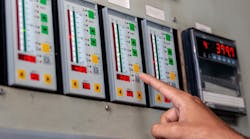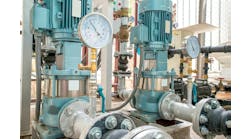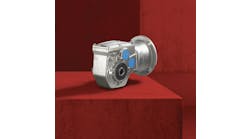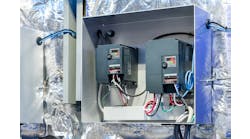An inverter, a dc bus, a rectifier and a regulator/controller make up the majority of the parts in a variable-speed drive (VSD). In order to create dc power, the rectifier would convert ac power. A capacitor on the dc bus would store the energy and reduce power sags and output voltage swells. The inverter would change the dc energy into ac energy, and the controller would handle all control operations.
In order to perform the VSD operation, a fixed-frequency input supply is changed into a variable-frequency output. High frequency can therefore be used for faster speeds while low frequency can be used for slower speeds.
Also read: 4 changes on the horizon for motor and drive use
By allowing the motor to produce more or less torque in accordance with the demand, we can change the output.
Mechanical variable-speed drives: The mechanical variable-speed drive would employ mechanical means to change a motor's output from fixed speed to variable speed. Both traction drives and drives with variable pitch are included in this group.
It is possible to change the diameter of one or both pulleys in pulley-and-belt drives with variable pitch. The power would be transmitted through metal rollers in a traction drive. Moving the rollers will alter the contact path's diameter, allowing you to modify the input and output. When comparing this type of variable speed drive to an electronic drive, it is less effective.
Hydraulic variable-speed drives: In this kind of drive, the transmission medium for the torque would be hydraulic oil. This device experiences significant mechanical and hydraulic losses when compared to other kinds of variable speed drives.
Also read: Why do I want to use a VFD?
Hydrostatic, hydrodynamic, and hydro-viscous drives are the three categories of hydraulic variable-speed drives. A hydraulic motor and pump make up the hydraulic drive. Speed can be adjusted by varying the displacement of the pump or motor.
The hydrodynamic drives would use oil to transmit torque between a rotor on the variable-speed output shaft and an impeller on the constant-speed input shaft. One or more discs connected to the output shaft make up the hydroviscous type of VSD.
Electric variable-speed drives: The process of variable-speed drive is done in four major steps. In Step 1, there is a rectifier that transforms the incoming three-phase ac power into dc power. In Step 2, capacitors receive dc power, which smooths the wave and creates a pure dc supply. In Step 3, the required voltage and current for the motor are determined by the variable-speed drive. After that, dc power is fed into an inverter, which generates ac power with the exact voltage and current required. In Step 4, only the power that the motor requires is provided by the variable-speed drive, which continuously calculates and adjusts the frequency and voltage.
For our daily operations to run smoothly, electric motors are required. Practically speaking, they move and operate everything we need for either work or play. They require the necessary amount of electrical energy to produce the torque and speed required.
Also read: Demanding motion applications often transcend industrial contexts
Mechanical controls will be applied to slow down the shift or control the outcome if the torque or speed becomes too high or low. The energy and raw material wasted as a result are significant. For the process' requirements, the motor's speed should be accurate. In the absence of a better speed-control method, energy is frequently lost, which is bad for business for everyone.
VSDs to control torque or speed: Variable-speed drives can increase the energy efficiency of your various applications, including pump, fan, conveyor and compressor systems. Because the system controlled by drives can be automated, no manual labor is required, saving time and money on labor costs. Variable-speed drives operate the motors at partial load, utilizing only the necessary amount of energy, which can reduce the drive system's energy consumption.
Within months of installation, the VSD investment in pump and fan applications will pay for itself quickly, thanks to the immediate reduction in electricity consumption. Finally, with drives, it is possible to reduce the stress placed on mechanical equipment during startup and operation, extending the equipment's lifespan.
These kinds of significant gains can be made not only in big industrial operations, but also in smaller installations.
Variable-speed drives not only improve processes, which saves money, but they also can increase energy efficiency. Any size organization can benefit from variable-speed drives. As technology grows, so will the use of drives.
Also read: Smart components improve changeover speeds





